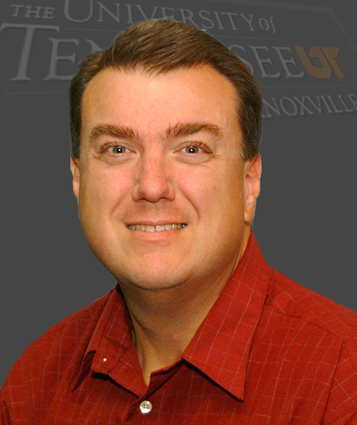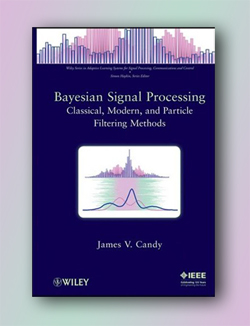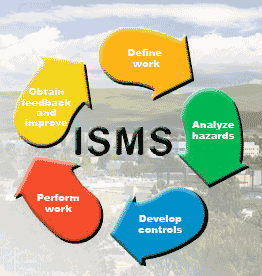News Briefs: April 3, 2009
New post governs Hall's move to Tennessee
The University of Tennessee at Knoxville has announced that LLNL’s Howard Hall has been named as the third University of Tennessee-Oak Ridge National Laboratory (ORNL) Governor’s chair.
Hall, currently the Laboratory’s radiological detection and response program leader, will hold appointments in the UT Knoxville nuclear engineering department and the global nuclear security division at ORNL. He starts his new job May 1.
"It’s a great opportunity and one of the really attractive features is that I’ll be able to help new students enter the nuclear field, so that the national missions of counterterrorism and nuclear security are sustainable in the long-term," Hall said.
"In some ways, I don’t view my new job as leaving the Laboratory because I’ll continue to collaborate with people at LLNL – and I hope to place some of my students at LLNL as we develop the next generation of scientists," Hall added.
The Governor’s chair program, funded by the state of Tennessee and ORNL, is designed to attract top scientists to take part in the research partnership between Tennessee’s leading university and ORNL.
Hall has spent his entire career at LLNL, serving in a variety of roles since 1989.
Before his current position, he served as the division leader of the radiological and nuclear countermeasures division and the program leader for nuclear assessments and forensics.
He also previously led a multi-laboratory team that executed the Department of Homeland Security’s Air Cargo Explosives Detection Pilot Program. The program assessed the ability of technological solutions to address the challenge of detecting explosives in air freight shipments by conducting real-world evaluations within operational airport environments.
For more about Hall’s selection as the latest UT/ORNL Governor’s chair appointment, go to the Web.
Candy’s book signals new processing approach
Jim Candy’s new book on signal processing, "Bayesian Signal Processing: Classical, Modern and Particle Filtering Methods," was published in March by Wiley-Interscience.
In essence, signal processing is extracting critical information from "noisy" uncertain data. The Bayesian techniques described by Candy, chief scientist in LLNL’s Engineering Directorate, circumvent the limitations of traditional methods by offering a completely different approach that can easily incorporate non-Gaussian and nonlinear processes, along with the usual, currently available methods.
This text enables readers to fully exploit the many advantages of the "Bayesian approach" to model-based signal processing. Candy demonstrates the features of this powerful approach compared to the pure statistical methods found in other texts. Readers will discover how easily and effectively the Bayesian approach, coupled with the hierarchy of physics-based models developed throughout, can be applied to signal processing problems that previously appeared unsolvable.
Candy’s latest text builds on his work in the model-based signal and image processing techniques that were the subject of three previous books. These techniques have improved acoustical detection and measurement for applications in national security, materials science and medicine.
In 2008 Candy awarded the prestigious Helmholtz-Rayleigh Interdisciplinary Silver Medal by the Acoustical Society of America (ASA), a society of the American Institute of Physics (AIP).
Laboratory ready for ISMS Phase I
On Wednesday, April 1, Director George Miller notified the Department of Energy that the Laboratory is ready for the Phase I Integrated Safety Management System (ISMS) re–verification. This milestone is the result of more than nine months of preparations by many Laboratory personnel and the ISMS Project Office.
Activities included in the validation of contract requirement are: flow down into institutional policies and procedures; implementing the LLNS governance model for Functional Area Managers; developing and approving a comprehensive upgrade to the LLNL work control process; and drafting of a new ISMS description that accurately reflects the Laboratory’s safety management system. Stephanie Goodwin is managing the Laboratory’s ISMS re–verification preparations and Frank Russo is the Principal Associate Director sponsoring the ISMS Project Office.
The National Nuclear Security Administration (NNSA) verification team will be led by Richard Crowe, Office of the Chief of Defense Nuclear Safety, with team members primarily comprised of DOE Livermore Site Office personnel. The team will begin their on–site evaluation the week of April 27 and will return during the week of May 11. ISMS Phase I evaluates the flow down of contract requirements into LLNL policies and procedures for the 31 functional areas; senior management understanding of the LLNL ISMS; roles and responsibilities; methods the Lab utilizes for integrating safety requirements into work planning and execution; feedback and improvement programs and processes; and work control, which includes hazard analysis.
ISMS Phase II declaration of readiness is expected in September. The Phase II assessment will evaluate the understanding and implementation of the institutional programs and procedures across the Laboratory by observing work activities, interviewing personnel at all Laboratory levels and reviewing documents.







